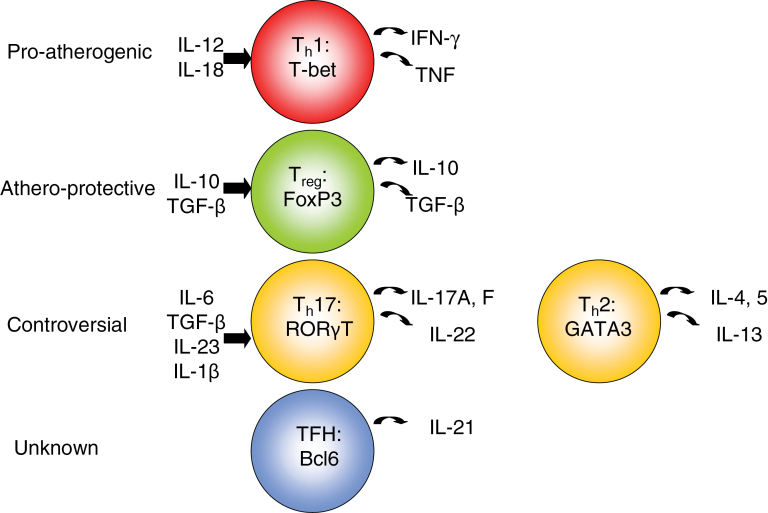Fig. 1.
The effects of T-cell subsets on atherosclerosis. Pro-atherogenic: Th1 (red). The presence of IL-12 and IL-18 causes Th1 skewing. IL-12 results in activation of the downstream transcription factor, T-bet. T-bet activation results in pro-inflammatory cytokine production, including IFN-γ and TNF. Athero-protective: Treg (green). IL-10 and TGF-β are required for Treg commitment. nTregs, and some iTregs, express the transcription factor FoxP3 and can produce IL-10 and/or TGF-β. Controversial: Th17 (yellow, left) and Th2 (yellow, right). Th17 differentiation requires a combination of several cytokines, including IL-6, TGF- β, IL-23 and IL-1β. These cells express the transcription factor RORγT, and produce IL-17A/F and IL-22. Naive CD4+ T cells commit to a Th2 lineage under the influence of IL-4. In a positive feedback loop, IL-4 increases expression of the transcription factor GATA3, which produces additional IL-4 and inhibits IFN-γ production. Unknown: Follicular helper T cells (blue). These are CD4+ T cells found in the B-cell follicles of secondary lymphoid organs. They constitutively express CXCR5 on their cell surface. They secrete IL-21 and express the transcription factor Bcl6.

